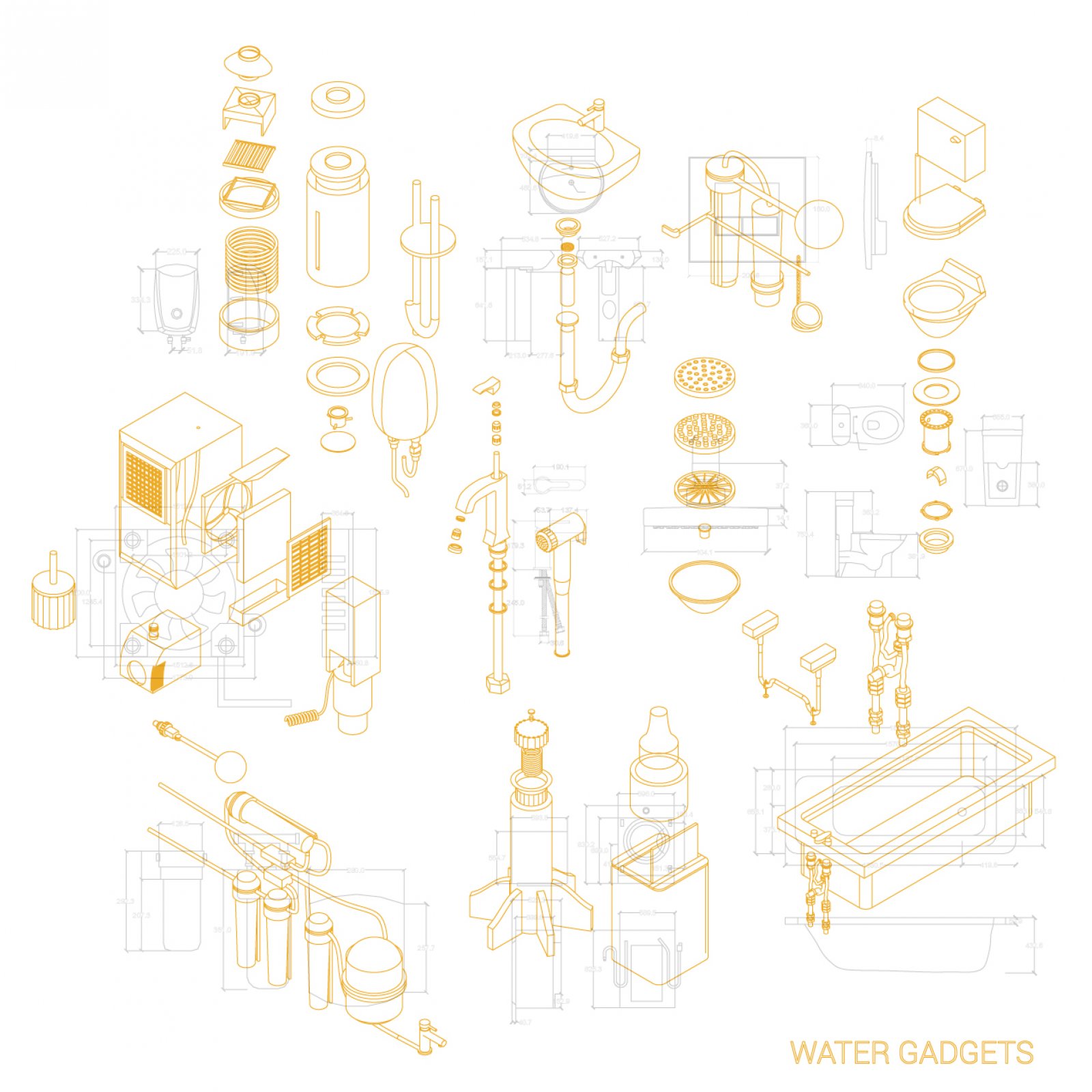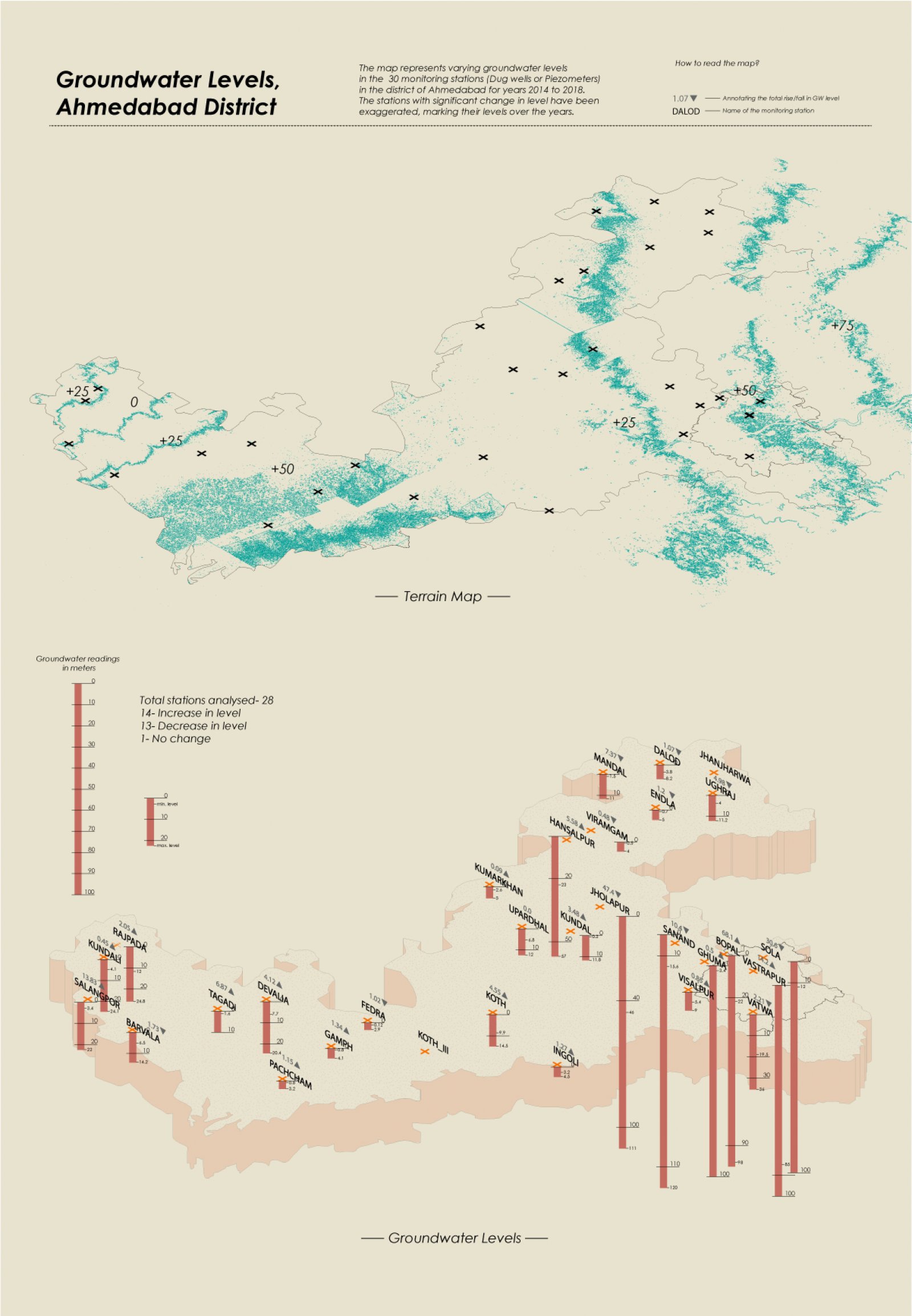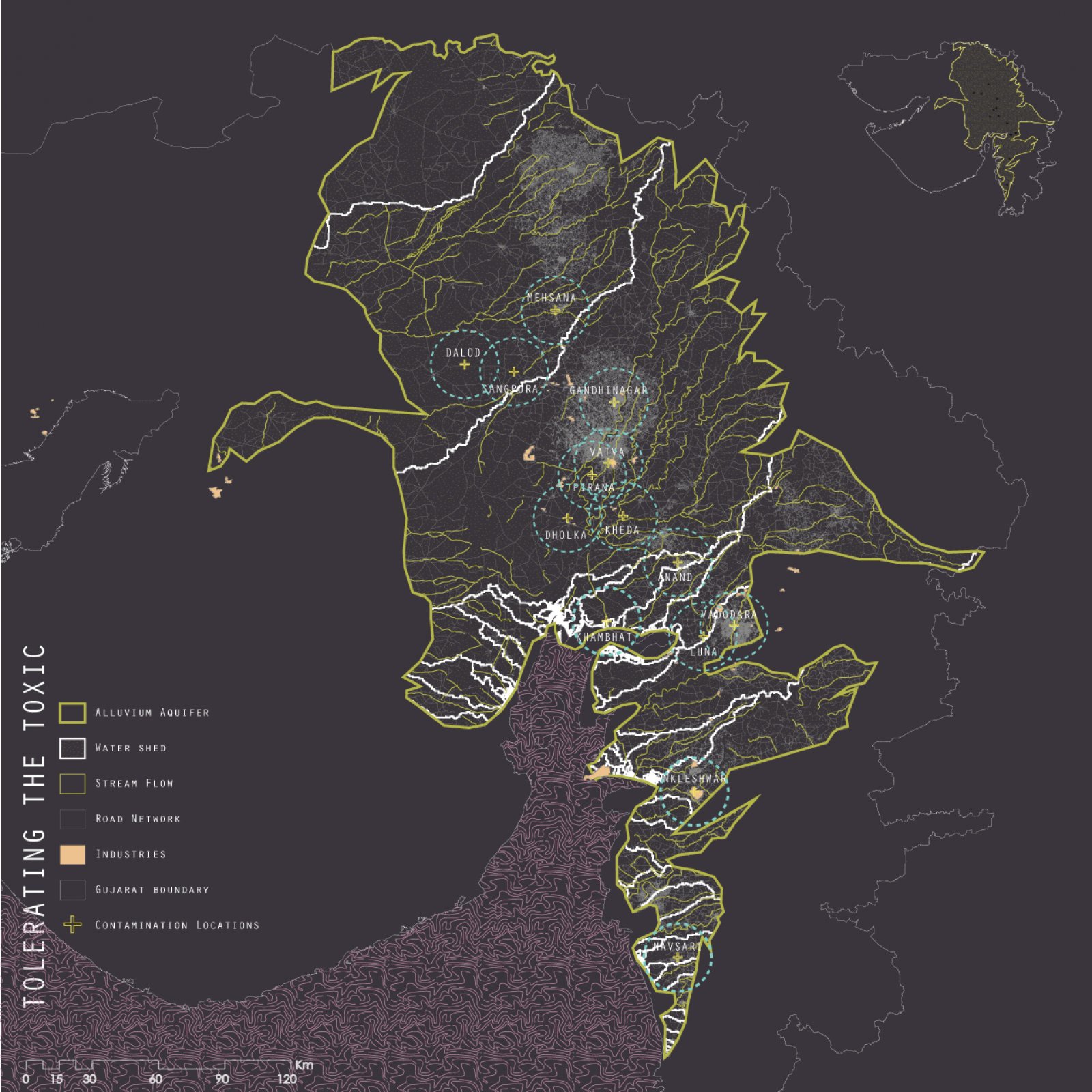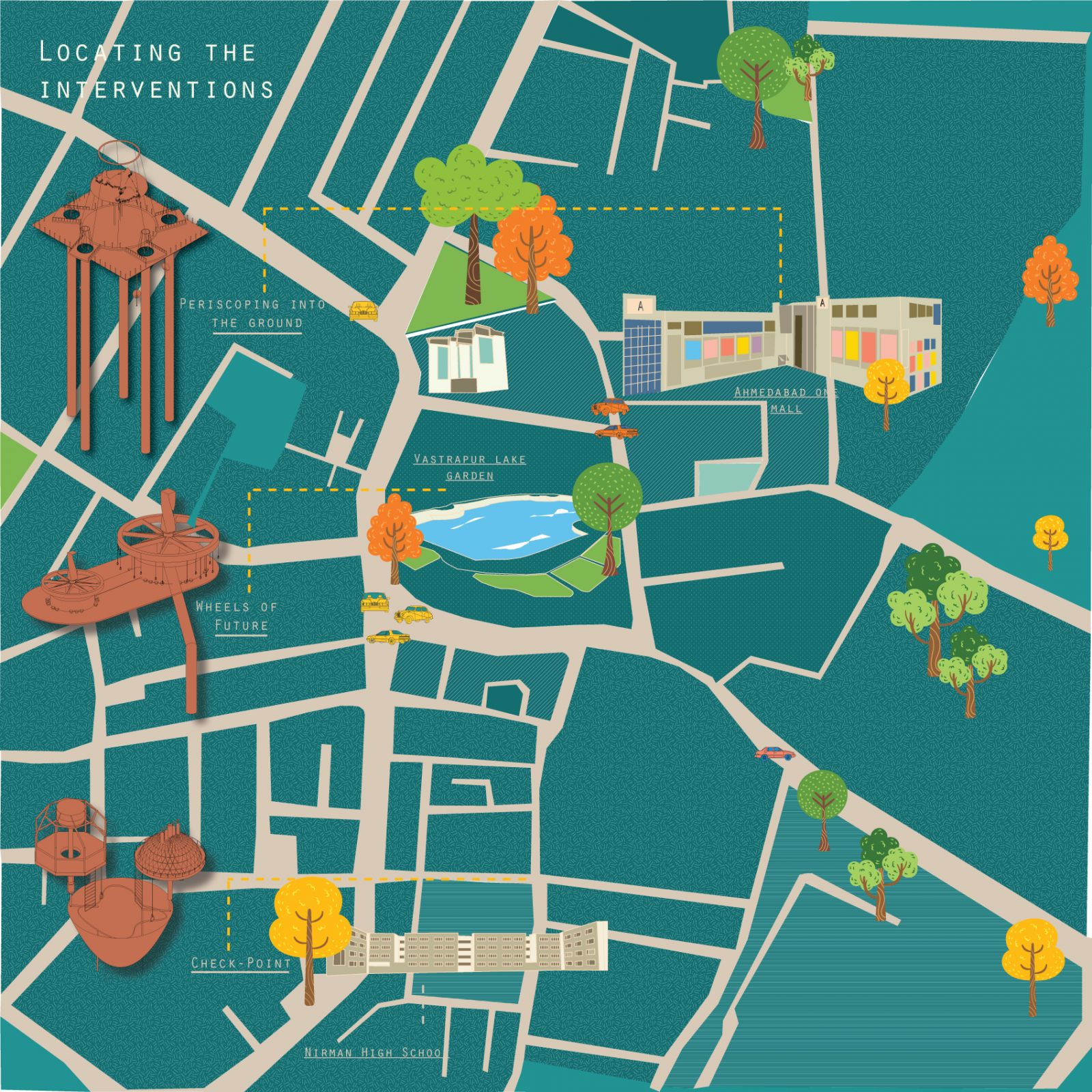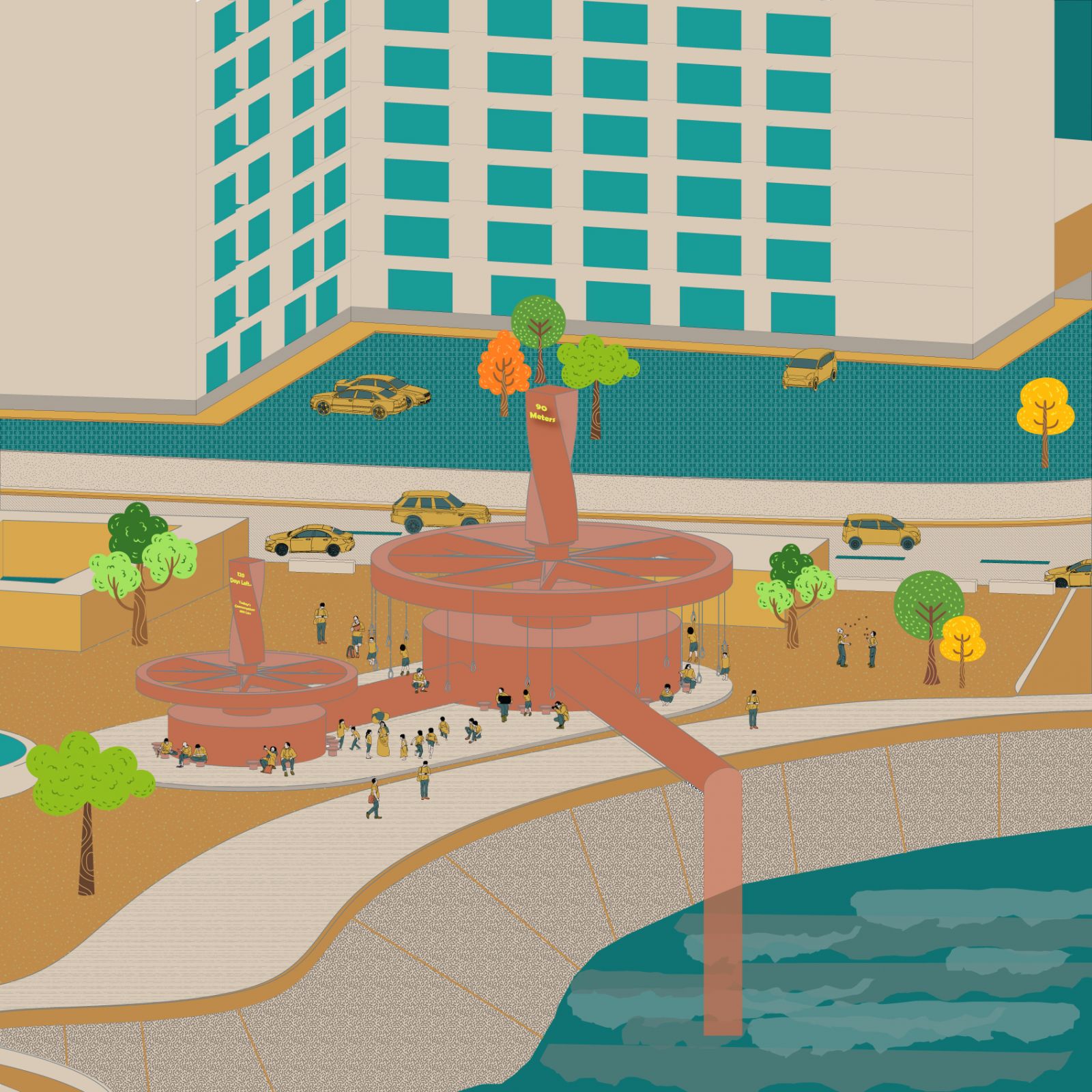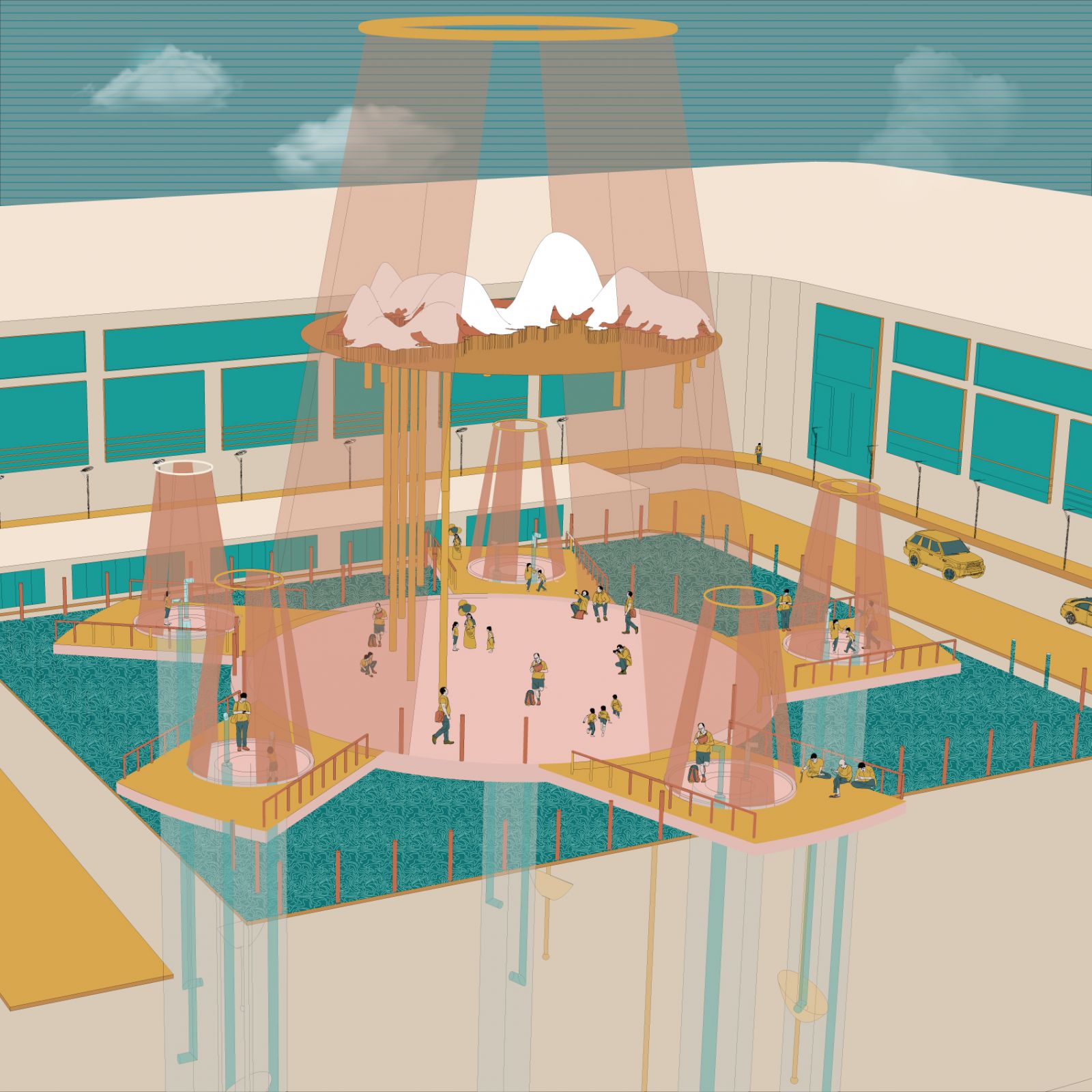Your browser is out-of-date!
For a richer surfing experience on our website, please update your browser. Update my browser now!
For a richer surfing experience on our website, please update your browser. Update my browser now!
Ironically, with increasing water supply-demand, step-wells and tankas have become ancient infrastructures of our cities. With growing population and urbanization we have become blindsided by a source of water that is about to go extinct. Groundwater has been an overly dependent source of irrigation and drinking water in the alluvial regions of the country and our ancestors had also worked out mechanisms of replenishing the aquifers which have been slumped now.
Revival of the unvisited is a critique on over-exploitation and lack of awareness regarding groundwater. Through significantly dominant interventions, it emphasises the visibility factor of groundwater by recharging, testing contamination, purification and interaction. Speculative interventions have been injected in the Vastrapur area of Ahmedabad where the excessive decline in groundwater levels has been witnessed. Each mechanism acts as an agent to revive groundwater by opening the unseen blindfolds of people. By making it visible through a participatory contribution by people it brings back the lost engagement with groundwater. Being located at places highly frequented by folks of all age groups, the interventions become detectable and approaches a larger mass at the same time. Through subtle actions of checking groundwater levels, witnessing the contaminated water and being able to peep inside the ground the interventions then become mediums to instigate awareness. They become a part of the daily routines of individuals and unknowingly prompt them to be more sensitised and innovative in relation to groundwater.
